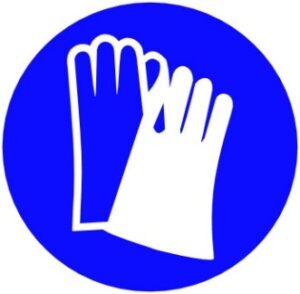Home » HACCP & Food Safety » The CFIA Preventive Controls
The CFIA Preventive Controls(PC)
This section summarizes the “Canadian Food Inspection Agency” guideline on how to establish an effective preventive control for your establishment (Source: controls for establishments; Recommended preventive controls – for establishments, Date modified: 2019-10-29). Below, is the link for this important aspect of the “Safe food for Canadians regulations” requirements. The guideline is lengthy, rich in information and contains tens of good references that associated to the subject matters.
https://www.inspection.gc.ca/preventive-controls/controls-for-establishments/eng/1574897110923/1574897111251
It is advised, however, that, all concerned parties, to review the above guidance document, before establishing their own preventive control programs. Needless to say that the need to use these types of control measures will vary depending on the establishment size, type of activities or products complexity.
Generally speaking, food businesses are responsible for complying with the law (not the guideline). The regulatory authorities (CFIA) objective is to guide you on how to demonstrate compliance with the law by ensuring that the commodities and processes for which you are responsible meet the regulatory requirements. In brief, they are telling you what they need, but they are leaving it to you to decide how you will meet these needs.
CFIA divided the Preventive Controls for food establishments into 14 programs as follow:
Cleaning is defined as the removal of dirt or debris by physical and/or chemical means. Sanitizing is defined as the reduction of microorganisms to levels considered safe from a public health viewpoint. Sanitizing takes place after the cleaning step because it is most effective on a minimally soiled surface.
An effective cleaning and sanitation program prevent contamination of a food from the hazards that can be present on equipment, food contact surfaces, and the premises by reducing the biological hazards and removing the physical and chemical hazards.
The cleaning and sanitation program should include elements such as:
- Identify all persons that will be responsible for cleaning and sanitizing activities
- Identify each area required to be cleaned and sanitized.
- Specify: the type and concentration of cleaning compounds and sanitizers and cleaning tools used and all equipment, and surfaces (walls, floors, and ceilings to be cleaned and sanitized).
- Determine the frequency of cleaning and sanitizing based on the risk of food contamination.
Condensation is the conversion of a vapour or gas to a liquid. Sources of condensation and areas where condensation can occur should be considered during the hazard analysis. Control measures should be taken to prevent or control condensation and protect the food from contamination.
Any areas, where condensation occurs within the establishment should be assessed to determine if there is a risk of contamination to a food.
Listeria monocytogenes is widely distributed in nature. It is well adapted to survival in the cold, moist environments commonly found in processing establishments.
L.monocytogenes is a pathogenic bacterium that: is resistant to drying, freezing and high salt concentrations, can grow readily at refrigeration temperatures, but can be destroyed by thoroughly cooking food
Contamination of a food with L. monocytogenes is one of many biological hazards that should be considered during a hazard analysis and when developing a preventive control plan.
Because of the potentially serious consequences, food establishments need to pay particular attention to controlling this biological hazard.
Steam is the gaseous state of water. Saturated steam is steam mixed with liquid water in a stable state. Culinary steam is saturated steam. It is commonly used to prepare food. It can be a source of contamination when applied to a food
If applicable, the preventive control program should address the boiler operation, the water treatment management, the steam distribution system, and the water source.
In Canada, ice intended for human consumption is regulated as a food. Because ice may be used as an ingredient, or may come into direct contact with food, care should be taken to ensure that the ice is made from suitable water and is handled in such a way that it does not become contaminated. The safety of ice is dependent on the source of ice or water used to make the ice, and the sanitary conditions under which it is prepared and stored.
The Preventive Control measures could include:
A) Sourcing
Sourcing food ingredients from a supplier that: holds a license to manufacture, or package food or a person who holds a SFCR license to import food or subject to third party audits and can provide audit reports that demonstrate the safety of their food products.
B) Receiving, for example;
- Verify that the materials are from an approved supplier.
- Sampling and testing the food ingredients received.
- Establish procedures for rejected ingredients
C) Storage
Assign different storage areas for different products, and identify rejected materials and hold them in a separate area until further actions
The intensity, colour and direction of lighting and the amount of light used to illuminate each area should: enable personnel to conduct their tasks properly.
If applicable, the preventive control program should include elements such as the sources and safety of light (including natural sunlight).
Pests such as insects, rodents and birds can contaminate food. Their presence in and around food establishments is unsanitary. There are several risks associated with pests in food establishments. It is important to control the risks associated with pests by preventing pest from entering buildings, eliminating pests, and preventing the contamination of food.
Pest control starts with the condition of the establishment and its maintenance and operation, inside and outside. The pest control program should describe a step-by-step detail on how the pest control activities are to be performed.
Cross-contamination is the unintentional physical movement or transfer of a biological, chemical or physical hazard from a person, object or place to another. It is often a contributing factor in outbreaks of foodborne illness.
In order to prevent cross contamination, you have to conduct a hazard analysis to identify all hazards that present a risk of contamination to a food. And to establish control measures to prevent hazards or reduce them to an acceptable level. The PC program should address the following:
1. Premises: Consider the physical separation of the areas dedicated to preparing raw food from the operational areas.
2. Process flow: Separate raw and unprocessed food, either physically or by time, from processed food. And separate food containing allergens, either physically or by time, from allergen-free food and ensure that cleaning is effective.
3. Cleaning and Sanitation: Clean up spills immediately to reduce opportunities for cross-contamination and avoid cleaning during processing operations.
4. Storage: Store ingredients containing allergens away from allergen-free ingredients and store other chemicals separately from food products
Backflow is an unwanted flow of potentially contaminated water in the reverse direction. Backflow of water presents a risk of contamination to the water supply and the distribution lines in an establishment. The use of prevention devices at key locations can help prevent backflow and the contamination of the water supply. If applicable, the preventive control program should include methods used to prevent backflow.
Certain foods, ingredients or their components can cause adverse or life-threatening reactions in individuals with food sensitivities. Food allergens, gluten and added sulphites are considered chemical hazards that food operators should consider during their hazard analysis and when establishing control measures.
Undeclared these substances are a leading cause of food recalls. The presence of these substances cannot be reduced or eliminated by a thermal treatment or post-processing step.
Preventive control measures are necessary throughout the preparation steps to prevent them from coming into contact with a food in which they are not an intended ingredient. Proper declaration of ingredients on the food label is necessary to inform consumers that may be sensitive to a food allergen, gluten or added sulphites.
The preventive controls for these substances are composed from establishing an allergen prevention team to Identify its sources and to implement control measures for Incoming ingredients, food formulation and areas where cross-contact can occur.
Sampling is the process of collecting and testing food, ingredients, the environment or other materials. Sampling is commonly used to monitor or verify the effectiveness of control measures to eliminate or reduce the hazards. Sampling can also provide assurance that incoming materials, finished products and water meet food safety standards.
If applicable, the preventive control program should provide information on the company sampling plan, which may cover the purpose of sampling, items to be sampled, storing and shipping, samples testing, and managing the results
Having a Supplier Food Safety Assurance Program (SFSAP) is one type of control measure that can help ensure that the materials received are safe and suitable for use.
The program could enable you to determine the ability and willingness of a supplier to meet your product specifications; and to establish a formal agreement with the chosen supplier to ensure compliance of the products you receive. Establishing a formal agreement helps ensure that they share the responsibility for safe food and may reduce the level of preventive controls needed by you upon receiving.
Establishments should have, a supply of water that is safe, appropriate for the intended use and of a quantity and pressure sufficient for the operational needs. The suitability of water is determined by doing a thorough assessment of the hazards it presents and the risk of contamination to a food.
If applicable, the preventive control program should include elements such as the classification of water based on its suitability for use, the identification of the hazards from water and the risk of contamination to a food, the water sources and the ongoing assessment of the water's suitability for use.

